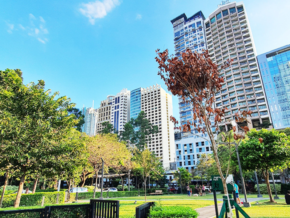A Guide to Fiestas in the Philippines
Filipinos love celebrations and festivities. Whenever a good excuse to throw a party and get together with relatives and friends comes up, that opportunity would most likely be seized every time.
One of the most popular forms of celebrations in the Philippines is through fiestas, which may very well be a celebration as old as time.
History of Fiesta
The word fiesta is a Spanish term for festivity, a telltale sign that the celebration was heavily influenced by the Spaniards. But despite the Spanish influence, scholars Antonio Pigafetta, Miguel de Loarca and Pedro Chirino recorded that Filipinos were already big on celebrations and feasts even before the colonization.
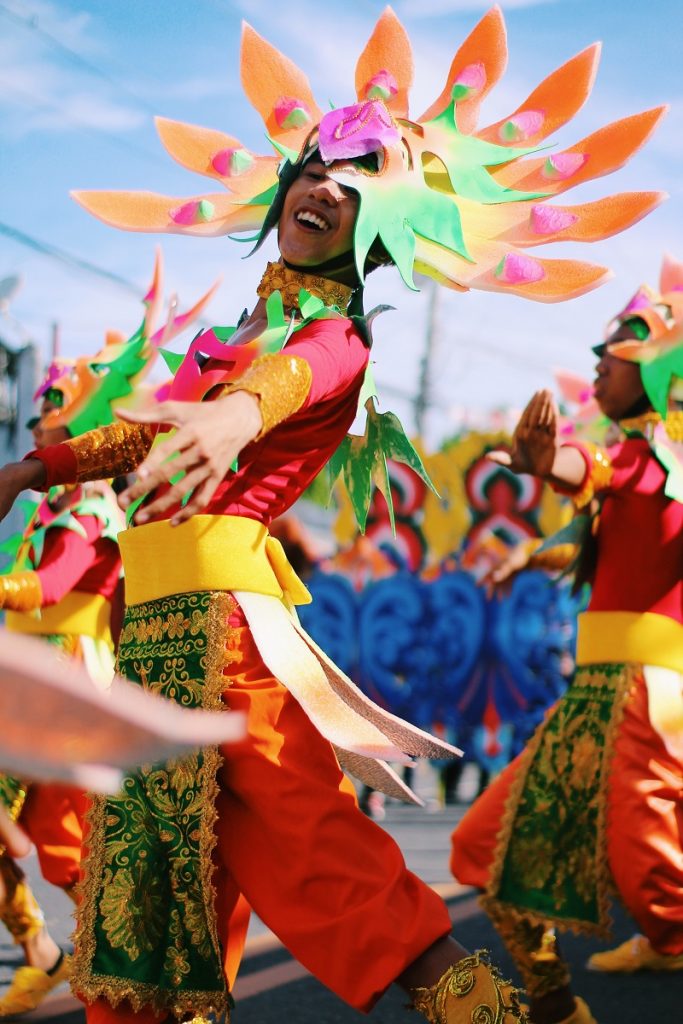
As a Catholic country, Spain’s main reason behind the observation of fiestas is to honor their patron saints. This also means that the celebration has been inculcated with traditional festival practices from the country like processions and novenas.
A Glimpse of the Fiesta Celebration in the Philippines
There are about a hundred different fiestas and festivals celebrated in the country every year. Every town, every city, every province honors different patron saints, which means every fiesta celebration is unique and distinct.
But if there is one thing in common amongst all of them it would probably be the extravagance of it all.
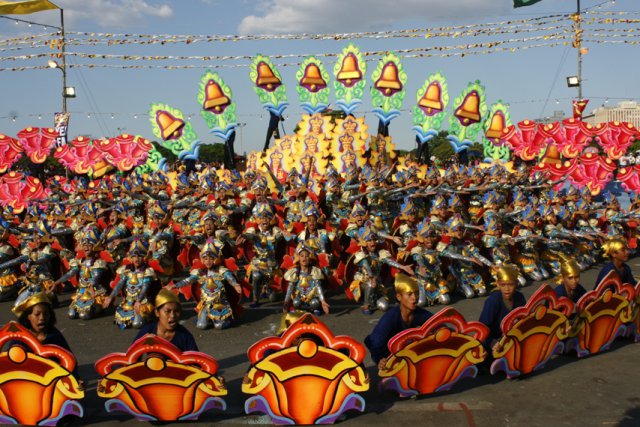 IMAGE Aliwan Festival website
IMAGE Aliwan Festival website
Every household is busy preparing for the fiesta may it be in terms of food, decoration, or invitation of guests. Filipinos love food, so you can just imagine the feast and spread available every time the town’s feast day finally comes.
Traditionally, preparations for the fiesta begin weeks before its actual day. One popular indication of a fiesta approaching is when the town begins to put up colorful banderitas (stringed flags) on the streets.
Towns would also begin organizing different performances, events, activities, and contests to be administered during the feast day.
On the feast day itself, households would be busy preparing favorite Filipino dishes for their invited guests (which is usually composed of relatives and family friends) at the break of dawn. The church also usually holds special feast day masses during this time.
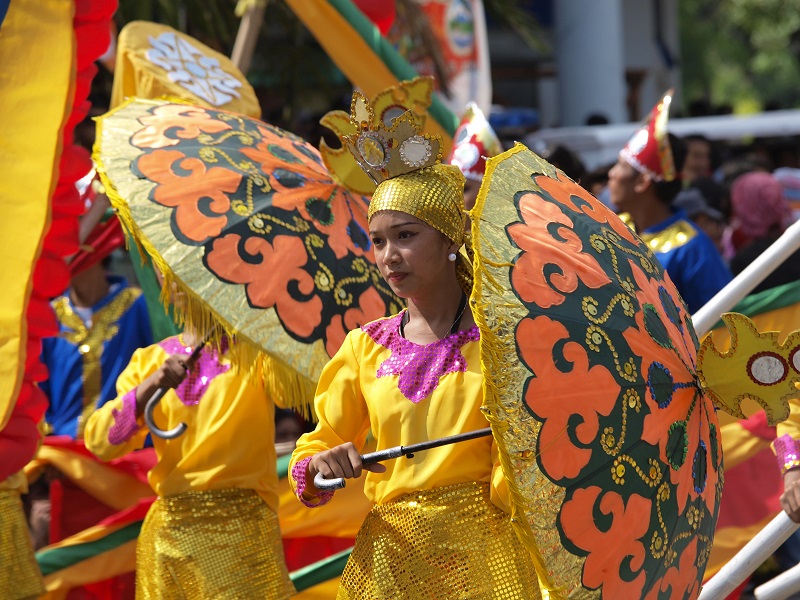 IMAGE Culture 360 ASEF
IMAGE Culture 360 ASEF
Later in the day, the procession of the patron saint would begin, this is usually accompanied by a performance of the marching band.
Visitors would also begin arriving. Plates are being passed around, bottles of alcohol are being opened, and the karaoke machine is being started up. This would go on for the rest of the day and would sometimes last until the early hours of the next day.
The Largest Fiestas, Feasts, and Festivals in the Philippines
The Philippines have loads of fiestas, but here are some of the biggest feasts and festivals celebrated in the country every year.
Feast of the Black Nazarene (January 9)
Quiapo, Manila
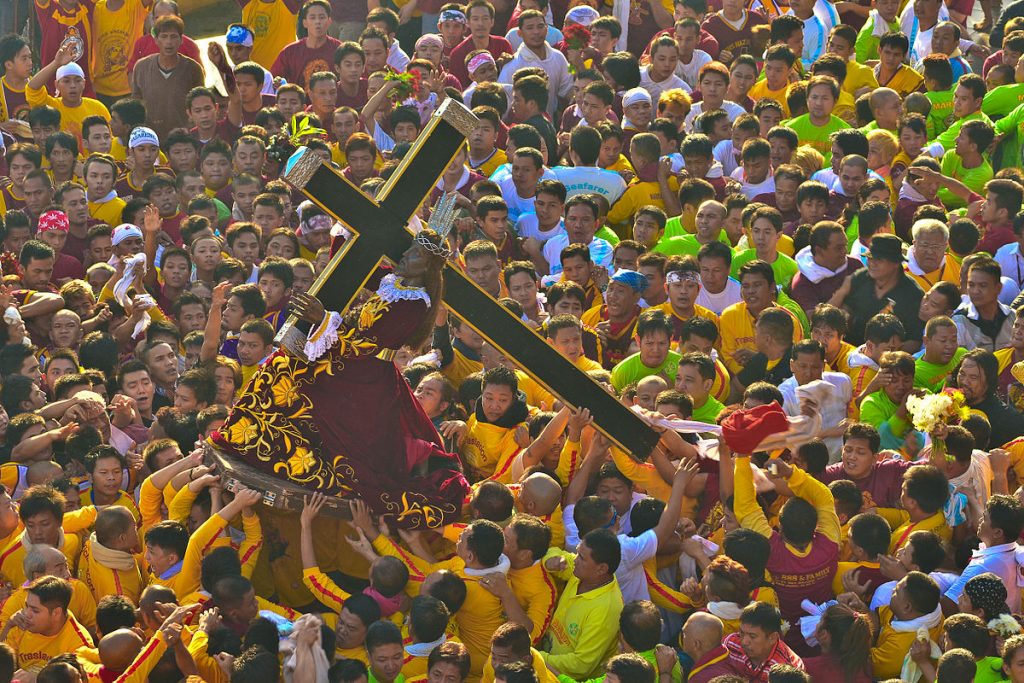 IMAGE Jsinglador – CC BY-SA 3.0, Wikimedia Commons
IMAGE Jsinglador – CC BY-SA 3.0, Wikimedia Commons
Also known as the Traslación, the Feast of the Black Nazarene is probably the largest procession in the country as thousands of devotees from all over the Philippines participate to honor the century-old statue of the Black Nazarene.
Sinulog Festival (Third Sunday of January)
Cebu City
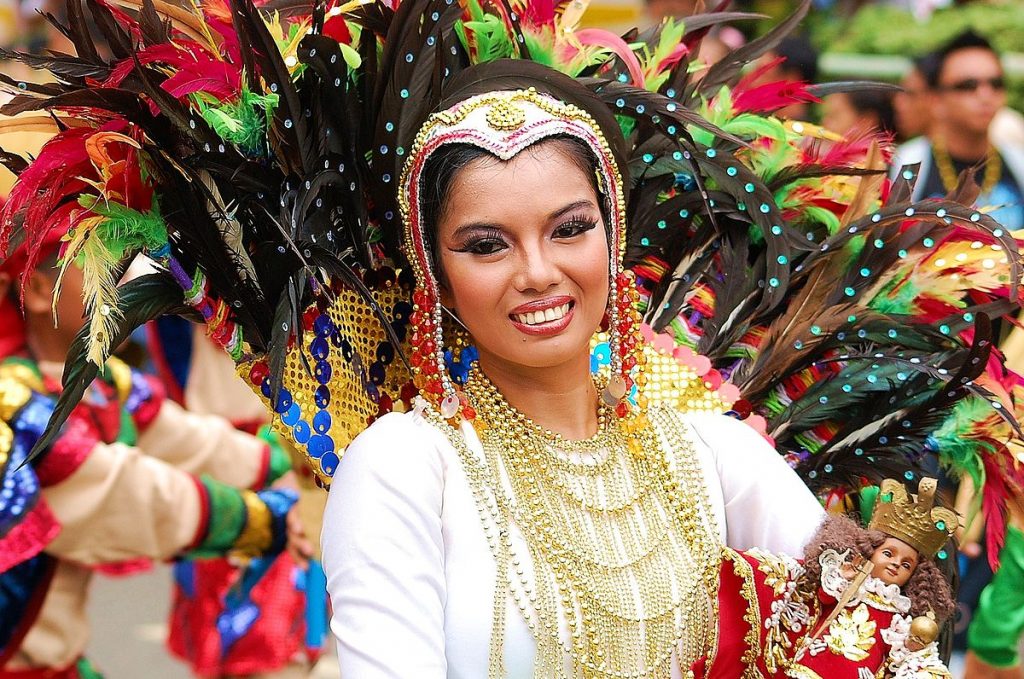 IMAGE George Parrilla – CC BY 2.0, Wikimedia Commons
IMAGE George Parrilla – CC BY 2.0, Wikimedia Commons
The Sinulog Festival is celebrated in the city of Cebu in honor of the image of the Santo Niño or the Child Jesus.
Ati-Atihan Festival (Third Sunday of January)
Kalibo, Aklan
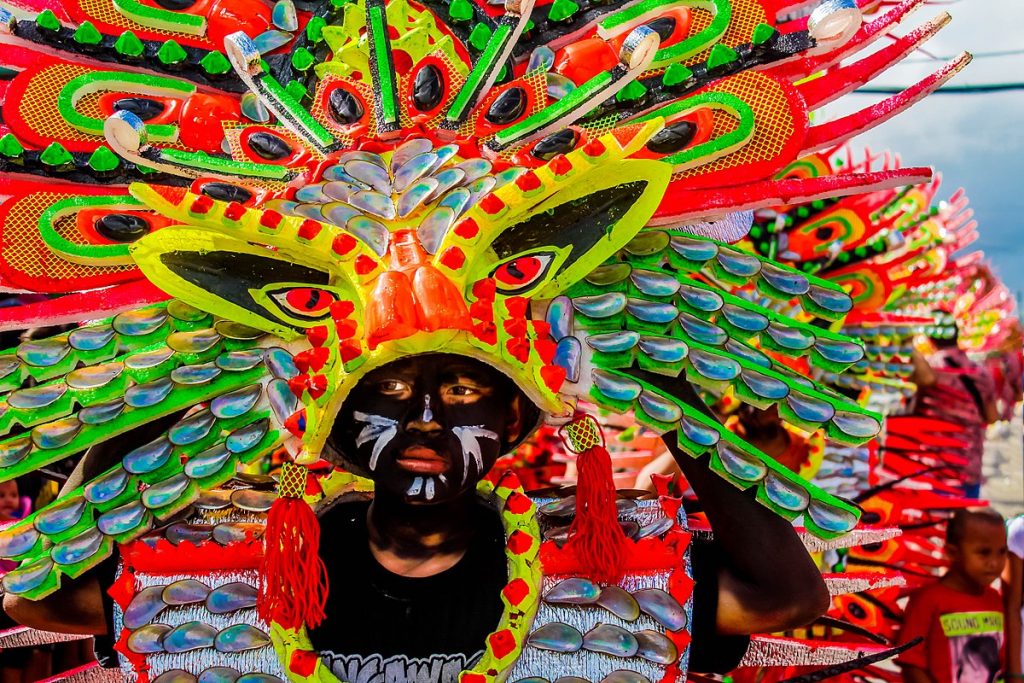 IMAGE EnzoBontia – CC BY-SA 4.0, Wikimedia Commons
IMAGE EnzoBontia – CC BY-SA 4.0, Wikimedia Commons
Aside from the waters and sand of Boracay Island, Aklan is also highly visited in the month of January because of their Ati-Atihan Festival, which is also observed in honor of the Santo Niño.
Panagbenga Festival (February)
Baguio City
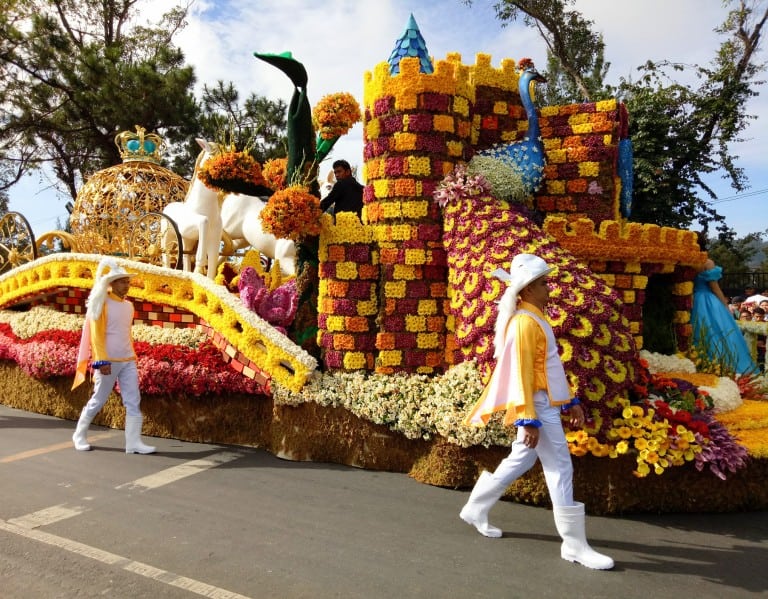 IMAGE Baguio City Guide
IMAGE Baguio City Guide
Panagbenga is the annual flower festival celebrated in the city of Baguio. The word panagbenga is a Kankanaey term which means the season of blooming.
Kadayawan Festival (Third Week of August)
Davao City
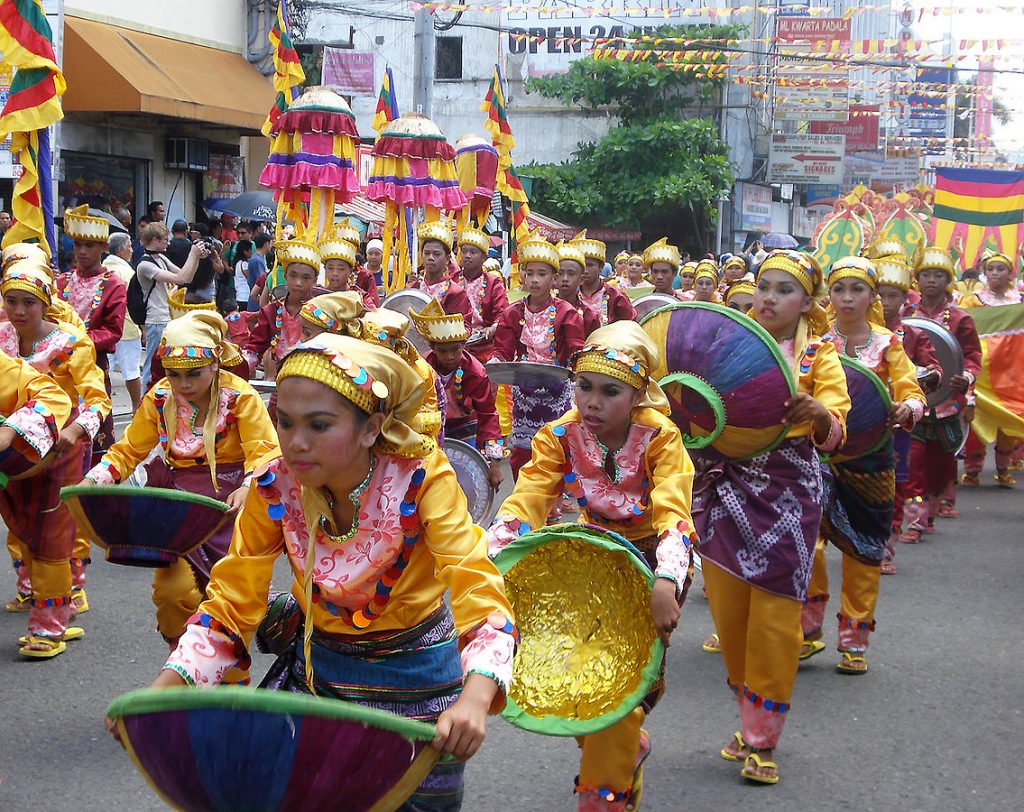 IMAGE GinaD – CC BY-SA 3.0, Wikimedia Commons
IMAGE GinaD – CC BY-SA 3.0, Wikimedia Commons
Kadayawan Festival is a large thanksgiving festival celebrated in the city of Davao.
Pahiyas Festival (May)
Lucban, Quezon
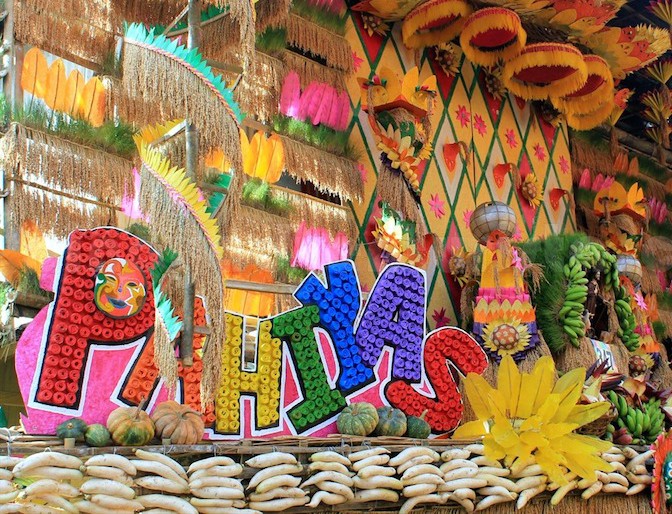 IMAGE Islands of the Philippines
IMAGE Islands of the Philippines
Nothing is more colorful than the Pahiyas Festival in Lucban as each house compete to showcase the best decorated kiping (wafer made from glutinous rice). The festival is celebrated as a form of thanksgiving for a year of a good harvest.
But more than the fun and celebration, fiestas show a glimpse of the colorful and lively history, culture, and traditions of the Philippines and how celebrations have the ability to connect and reconnect human relationships and interactions.
Sources: SunStar, CCEL, NCCA, Culture360, TPB, BusinessMirror, Sinulog, Panagbenga, and Pahiyas








